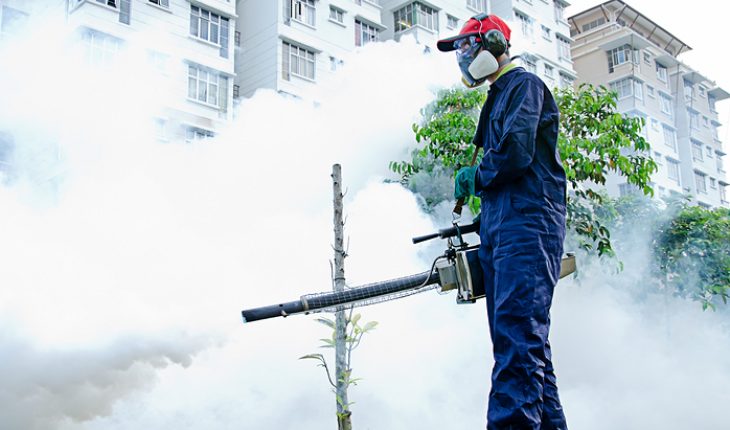Four years ago working in Timor Leste, I experienced the devastating effects of dengue fever and malaria on families in a resource-poor environment. Waving mosquitos away from my face, I took blood tests and treated a cohort of sick children lying in their parents’ arms, lethargic and flat in the Emergency Department. I wondered what further useful, preventative advice we could give to patients when I found myself caught up in the struggles of daily life and forgetting to reapply mosquito repellent during high-risk periods.
Mosquito repellent has untapped potential to help populations at risk of arthropod-borne infections, like the Timorese. Repellents are used to prevent transmission of these infections which are not vaccine-preventable and can reduce the risk to human health posed by emerging and imported diseases. Take a moment to consider the global health burden of mosquito-borne illness: 3.2 billion people are at risk of malaria, 3.9 billion people at risk of the various serotypes of dengue fever, and millions more susceptible to countless lesser-known infections like the LaCross virus which can cause a life-threatening brain infection. Urban drainage systems and mosquito control programs have mostly reduced local malaria transmission in more developed countries but are not universal in their implementation. Millions of people are diagnosed with known arthropod-borne diseases each year. I worry how many viral illnesses we see in the emergency department are from unknown mosquito-related diseases yet to be discovered, but possibly preventable.
Large pharmaceutical companies focus on producing and marketing treatments to prevent further harm to populations suffering from lifestyle-related diseases. Despite recent emotive headlines like ‘Zika Virus May Affect Brain Function in Adults’, we may already have a defence against emerging arthropod-born infections…mosquito repellent.
Before we discuss the issue further, we need to determine whether or not mosquito repellent can actually stop the transmission of Zika on a population scale. With the current generation of repellents, the answer is likely no. Recent research highlights how repellents prevent mosquito bites in scientific studies, but in ‘real world’ environments, multiple factors render them incapable of preventing deaths from malaria. It is suggested that a large majority of these reasons are user-dependent. People do not find greasy, sometimes toxic repellents tolerable and consumer groups have justified concerns regarding their safety.
Repellents work by making the atmosphere within 4 centimetres of the human skin noxious to insects so as to discourage biting. Substances can be either chemically or naturally occurring. Two main market leading chemical formulations are DEET and picaridin/icaridin with natural alternatives in eucalyptus/PMD, citronella and permethrin. As of yet, we have not been able to successfully combine repellents and suncream due to the increased absorption of DEET when applied under suncream. Given that the majority of arthropod infections occur in warmer climates with greater solar insolation, we are faced with the awkward dilemma of being unable to fully protect against carcinogenic sunburns or the morbidity of mosquito-borne illness.
So what might an ideal repellent look like? In my opinion it is non-toxic, odourless, naturally synthesised, easily applied, sweat resistant, produced in a variety of forms that are commercially viable, can be automated or impregnated into clothing and building materials without damaging them, is produced at a low cost and can be combined with suncream and other cosmetics.
Now that we have defined the issue, some ‘out of the box’ thinking is required. Controlling the tide of emerging arthropod-borne diseases is everyone’s business, not just the mandate of environmental health agencies. There might be commercial advantages for businesses to become champions in the prevention of Zika transmission. I hope we can fulfil my dream of developing non-toxic repellents that can be impregnated into clothing and building materials. Manufacturing and construction companies have the potential to market themselves as ‘Zika ready’. Imagine local populations purchasing tee-shirts which are impregnated with an odourless repellent lasting 100 washes. Instead of ongoing insecticide fumigation of buildings to prevent dengue, we could manufacture materials themselves with innate repelling properties. The urban design of popular public spaces could also integrate automated repellents to encourage safe, active community participation.
As threats emerge, the opportunity to protect is magnified. As the devastating effects of Zika are in the public eye, let’s take the chance to campaign for a better mosquito repellent. A large percentage of the world’s population living in areas likely to be affected by endemic arthropod-born diseases are experiencing the daily pain of childhood microcephaly and cannot wait for disease-specific treatment. Effective prevention of all mosquito bites has the potential to stop the transmission of numerous diseases and reduce generations of human suffering. To repel is to protect.
- To Repel is to Protect - 7th September 2016
- Please mind the Gap - 15th April 2016






